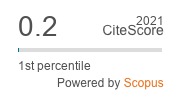Making Layered Security through a Sand box Model
DOI:
https://doi.org/10.17762/msea.v71i4.1681Abstract
Sandboxing keeps the script isolated inside a test environment and prevents it from contaminating or negatively impacting the operating system or host device. As the name indicates, this limited testing environment functions as a kind of "sandbox," enabling you to experiment with different elements to understand how the system functions. Additionally, it is a secure setting in which everything that goes wrong could not have an adverse effect on your host devices. Internet usage has completely changed the banking industry in the modern era. At all three levels, financial industries are currently subject to a variety of threats. It is the authentication and access control problems on the client and server sides. Additionally, one of the main issues of flooding attacks is DDOS. The issue is network congestion in the communication channel. A cybersecurity approach called sandboxing involves running code on a system that simulates end-user working settings, analyzing it, and coding in a secure, enclosed environment. It is frequently used to examine unidentified or insecure code with the purpose of preventing the potential threat from accessing the network. This article's goal is to propose an idea for creating a sandbox security policy for banking servers utilizing IP addresses. It offers a defense against DDOS and ARF spoofing.




